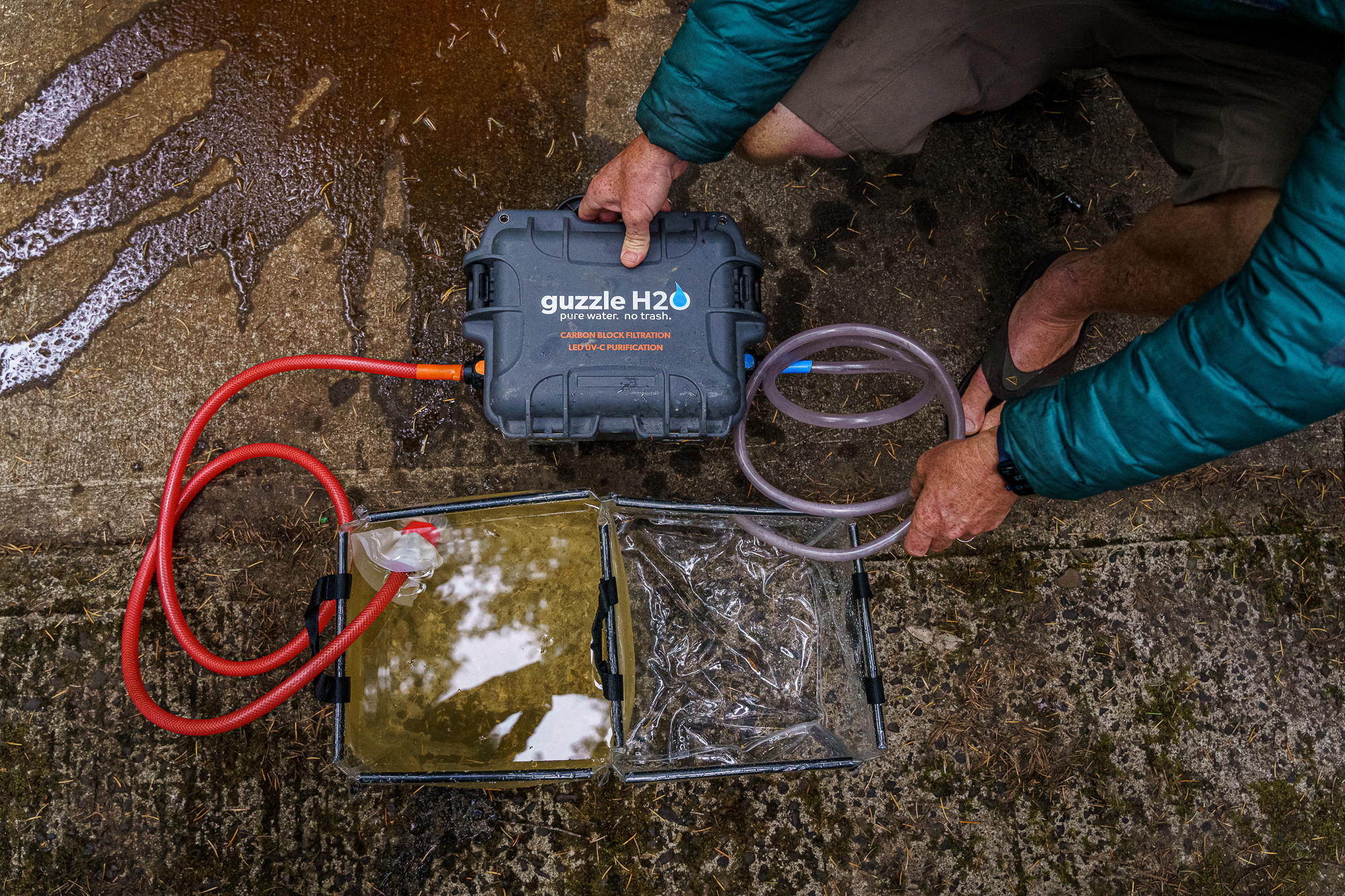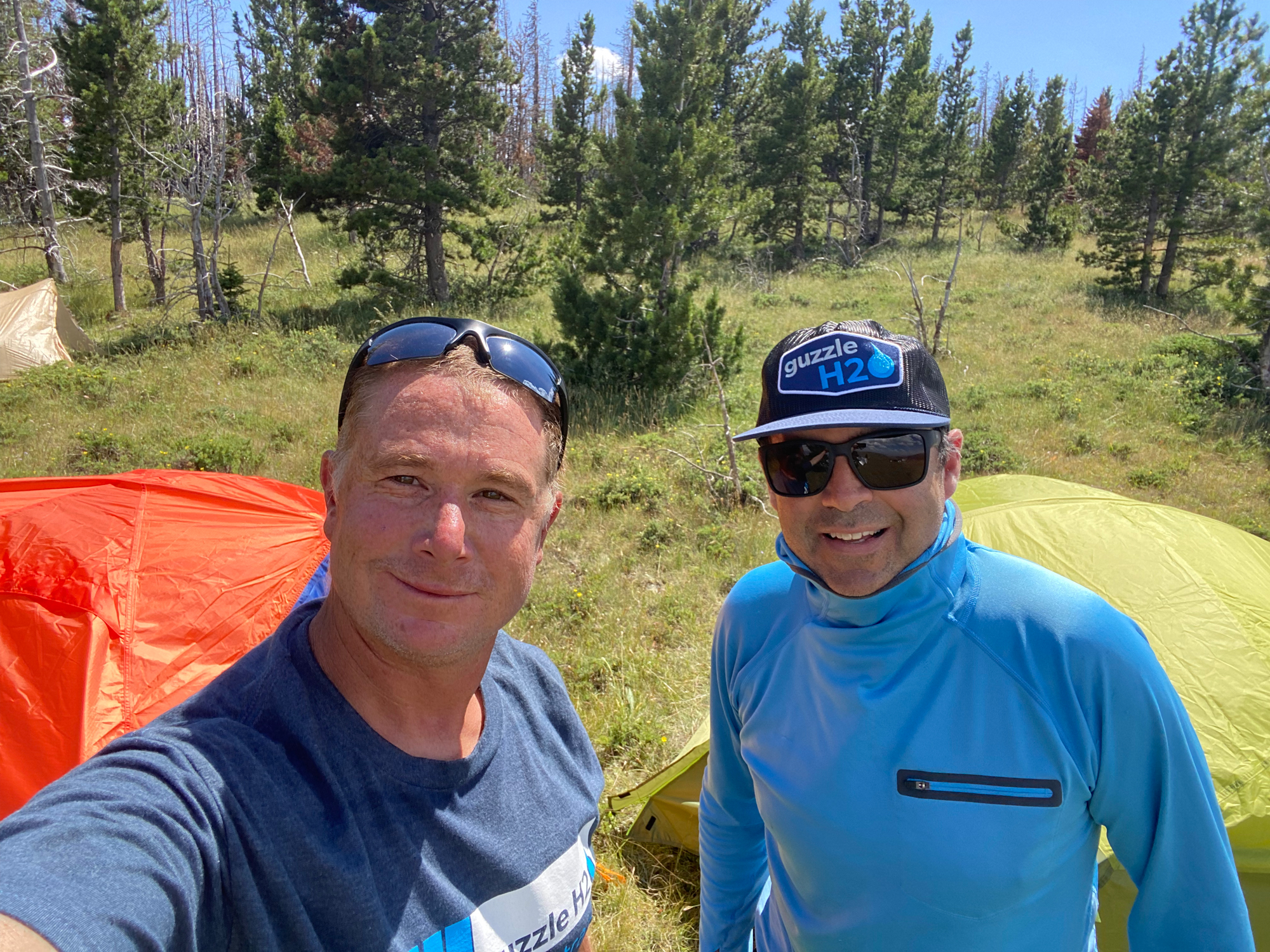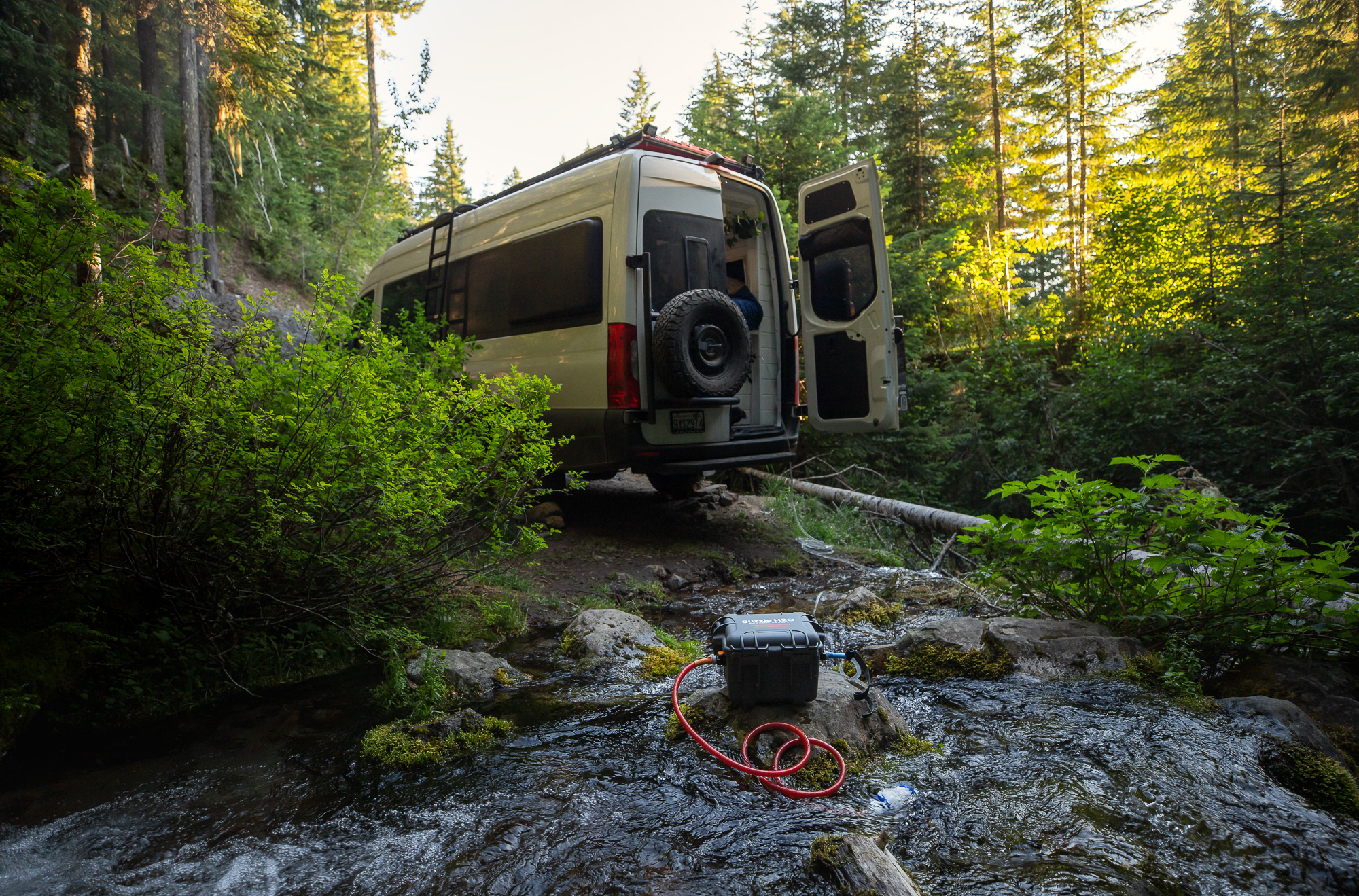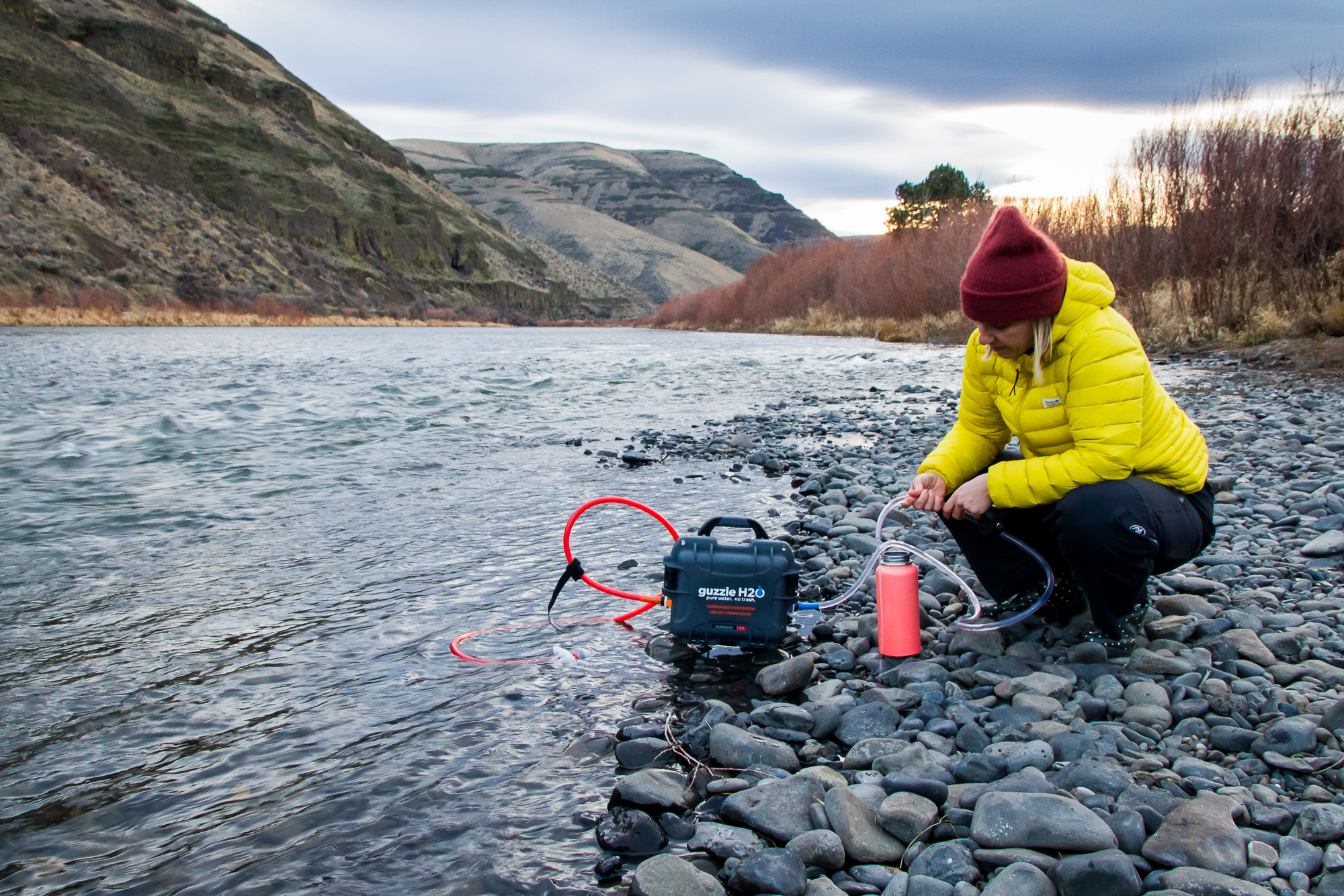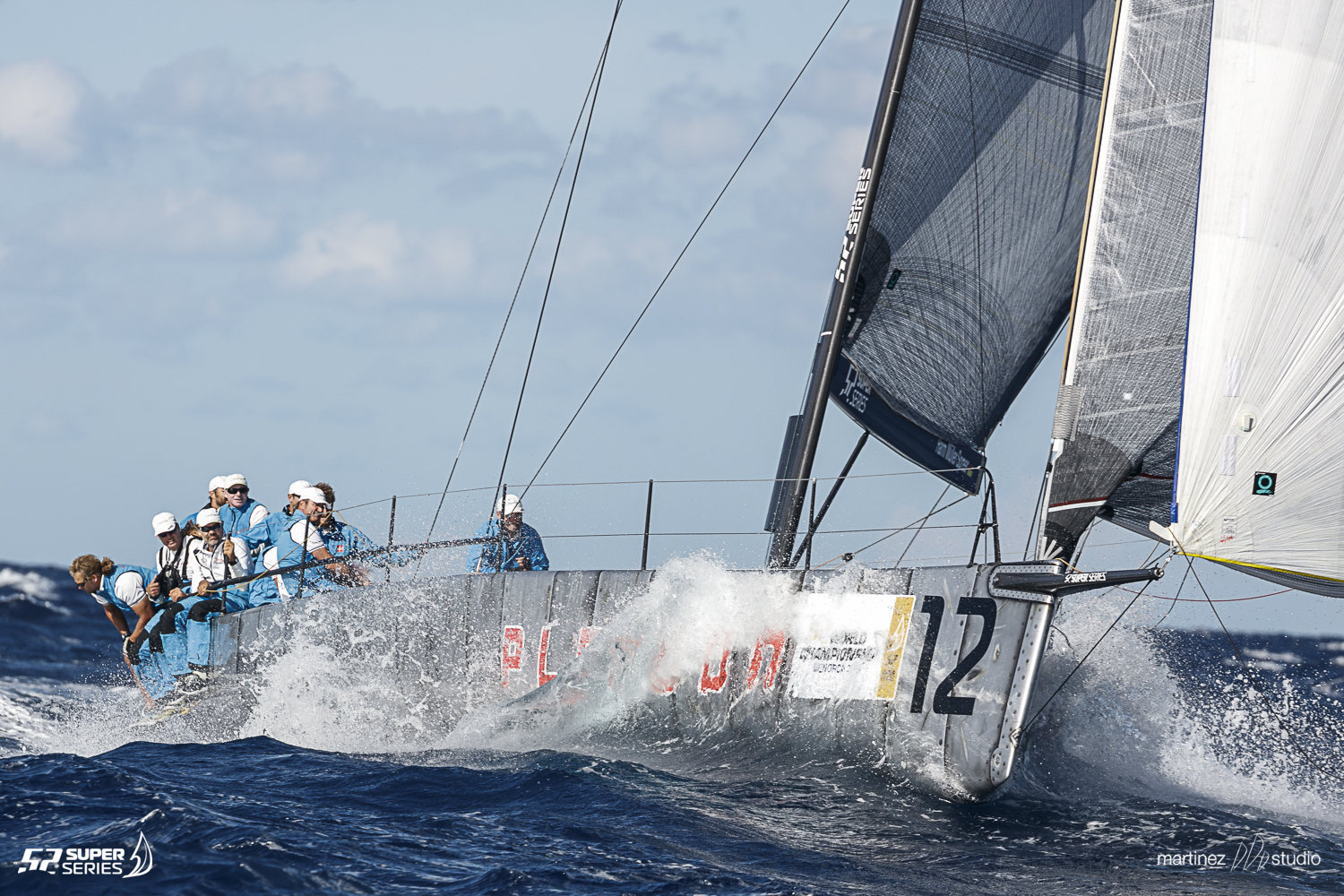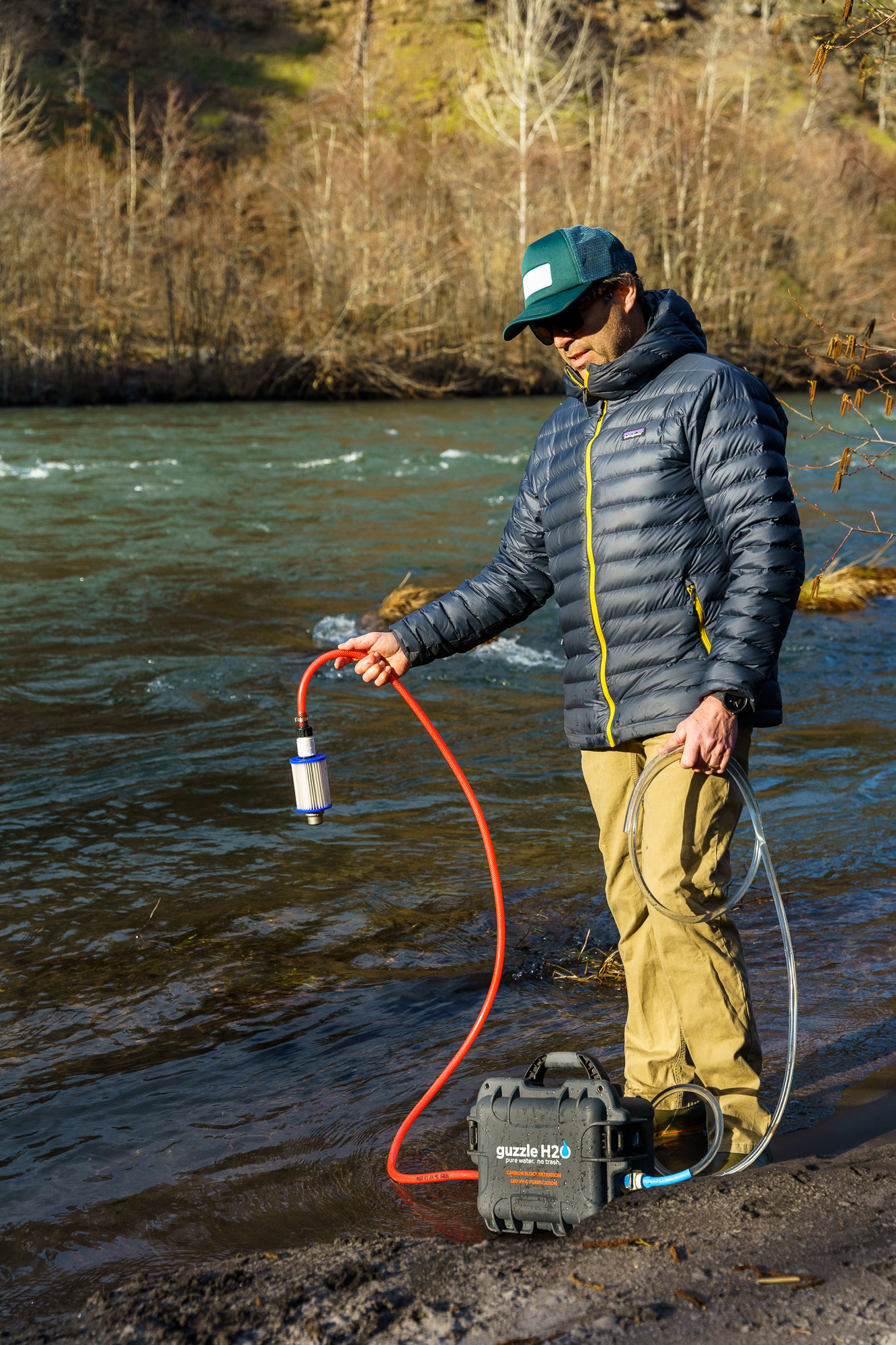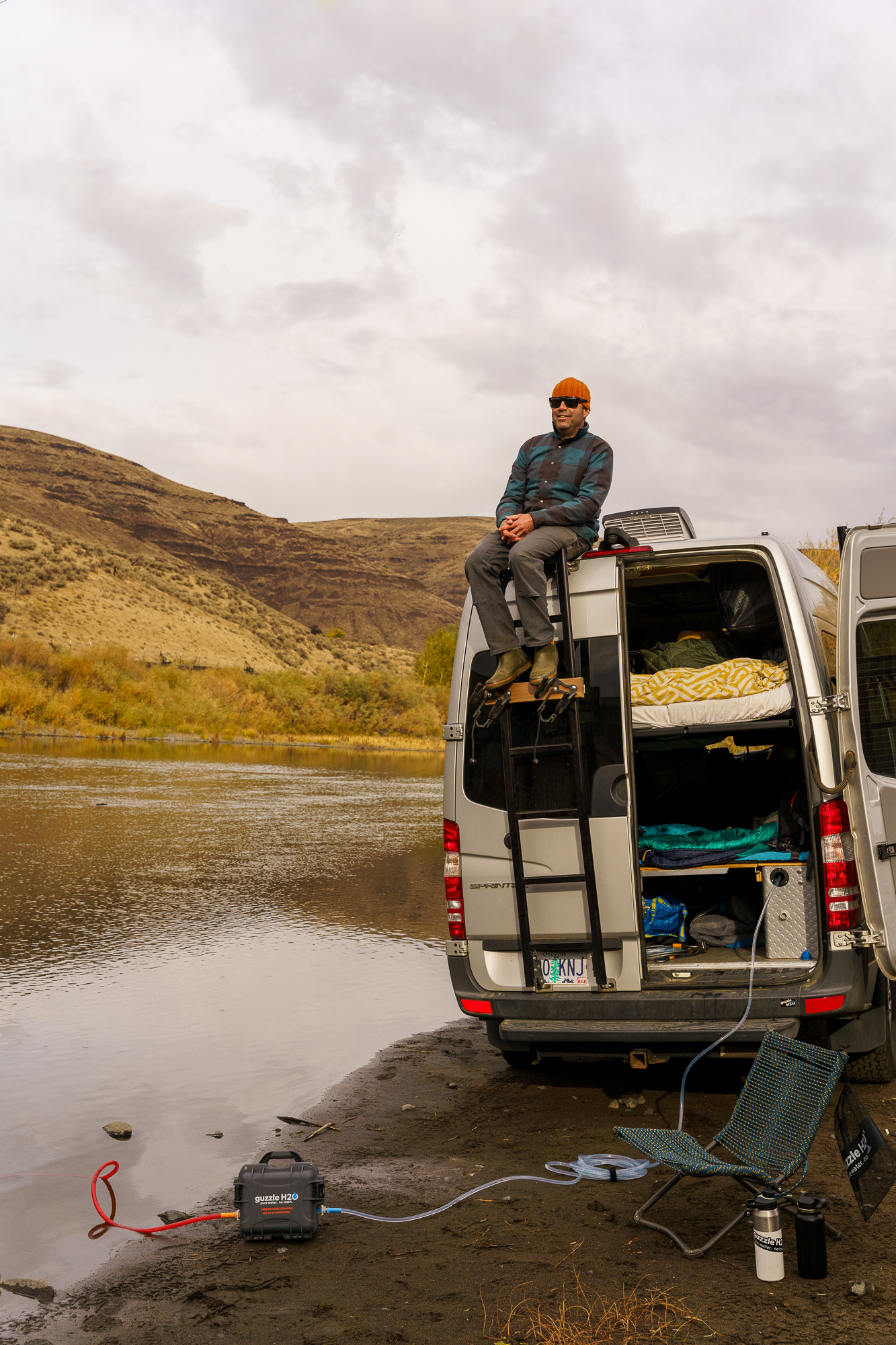In this installment of the Expedition Portal series on brands that inspire us, Senior Editor Ashley Giordano profiles water filtration and purification manufacturer Guzzle H2O.
After witnessing the amount of garbage created from single-use plastic bottles during international sailing regattas, professional sailor Sean “Doogie” Couvreux took to Facebook. “The garbage situation was ridiculous,” he says. “We were trying to keep the oceans clean, yet we were part of the problem.” By banning one-time-use water bottles, he typed in 2017, professional sailing teams would be forced to develop better solutions. Instead, Couvreux tackled the problem head-on, contacting his colleague, Tyler Bech. One year later, the pair started Guzzle H2O, a water filtration and purification systems manufacturer in the US.
Sailing and overlanding overlap in many ways, so Guzzle H2O bridged the gap between land and sea, providing clean, safe water to vehicle-based travelers thanks to built-in and portable filtration systems. I touched base with Couvreux and Bech to learn more about the company’s origins, filtration and purification systems for overlanding, and what’s next for Guzzle H2O.
What is the story behind the first Guzzle H2O product?
Doogie: Tyler and I had worked together on some projects in the past, so we thought maybe we could provide a solution. We started with the really specific problem of how to replace bottled water for these athletes— more specifically, how we could make water at the marina useful for drinking. Fresh water is always plumbed to the dock, but people don’t want to drink it. The demands of sailing teams getting off the dock each day mean that a drinking water system needs to work in a relatively harsh marine environment, work super fast, and be dead simple to operate.
We looked at the latest tech for water purification and started building prototypes. I knew it was important that our device be fast, super easy to use, and able to handle a rough environment. So, we kept building systems and using them in the real world and got immediate feedback on their pros and cons.
Existing backpack-style systems didn’t support the quantity of water a group of athletes needs or the convenience preferable to bottled water. These teams travel around the world and participate in events in different places where they aren’t sure about the quality of the available water. Pretty quickly, we learned how to make water taste good, and we found a great technical partner that could supply the LED-based UV purification technology that ensures the water is safe to drink.
Another lightbulb moment came later when we saw the potential of wider applications for what we had designed and built. Sailboat racers and ocean sports athletes and events are a really small niche. We expanded our vision to include anyone who was into outdoor adventure sports, off-grid living, vehicle-supported exploration, and disaster relief and preparedness.
Tyler: My answer picks up where Doogie leaves off. I went to Overland Expo for the first time with the Stream in 2018. I met a ton of great people like Bob Wohlers of Offroad Safety Academy and started relationships with many of the adventure vehicle builders we work with today. I also learned about what the overland traveler needs for water, and how the rigs go together.
How did your products make the leap from the sailing world to the overland world?
Tyler: We’ve always had the mindset that vehicles are tools for getting out on adventures. For instance, vans have always been a big part of windsurfing culture because you need a big car to transport your windsurf board to the beach. We would often camp in parking lots at ski areas, so the idea that a truck is a habitat was not a big leap. I would also say that we are part of this new wave of outdoor brands that have found traction in unlocking the vehicle-based traveler experience.
What are some challenges you’ve had to overcome along the way? What successes are you most proud of?
Tyler: As a company manufacturing gear in the USA, our toughest challenges come from the supply chain. The pandemic and natural disasters disrupted things, like the ice storms in Texas, which [affected] the power supply of plants that make plastic used by one of our suppliers.
There are a lot of business wins we’ve had along the way where hard work or persistence paid off, but I’m most proud when we hear from customers we’ve helped with their water anxiety, whether on the road, at an off-grid residence, or even at home. It’s also an adventure to run a business, meet customers, influencers, and experts, solve problems, and make progress along the way. So, moving forward is something I am proud of.
What is the difference between filtration and purification, and why is this important?
Tyler: You can think of filtration like a screen door. It is a barrier that lets water pass through but physically and mechanically keeps out particles over a certain size. This is great for removing sediment and particles like microplastics. Guzzle H2O systems use carbon filters, which have an interesting feature in that the material has open bonds that grab a wide range of chemicals and suppress it in the carbon material—this is kind of like a screen door made from sticky screen material that grabs chemicals that might otherwise pass through.
The bad news is that the things that make you sick (bacteria, protozoa, and viruses) are among the smallest and require very fine filters to remove. These filters are so fine they either work slowly or clog often. This is where you need purification, a process where the microbiological hazards are inactivated. Boiling water is the classic way to do this, where the heat makes the cell membranes and proteins fall apart. The cell material is not actually removed, but it becomes unable to reproduce and thus makes people sick. UV works the same way, except it disrupts the DNA of the cells so they cannot reproduce. Note that purification doesn’t remove everything, such as chemicals, from the water.
You can see that for a complete water treatment program, you need filtration and purification working together because chemicals in your water are not desirable, and you also don’t want to get sick.
What are common mistakes people make when attempting to purify water?
Tyler: Not learning to use the equipment they brought on the trip. We always recommend trying out your gear and practicing with it before you get into the backcountry. No matter what technique or product you are using, this will highlight something you did not consider, and you will have a chance to learn before your life depends on it.
Doogie, how do your racing skills translate to your everyday happenings at Guzzle (if at all)?
Doogie: I have been competing in professional sailing for almost 25 years. Sailing forces you to solve problems on the go and keep racing. After every race, we debrief and analyze what we could have done better. Everyone has to be ready to accept they can do a better job. I’m always looking at how I can improve my performance on the boat, be it in the efficiency of a maneuver or the way the systems work and how to improve them.
That mentality becomes quite an asset to designing products and solving challenges at Guzzle. Good enough is not good enough. I’m always trying to come up with a small upgrade in how we build our systems and the parts that we use or improve our process. I really enjoy being innovative and coming up with different solutions. Tyler and I have different views on how to solve challenges, so we feel we’re a strong team when our ideas are bashed together, and some pretty cool solutions come about.
Since Guzzle’s inception in 2018, which products have you been most excited about and why? Is there anything coming down the pipe you can tell us about?
Tyler: The Stream system is definitely our flagship product, and there is still nothing else out there like it for its capability, size, weight, and ruggedness. We want to see it play a bigger role in disaster preparedness, wildland firefighting, and the military. We have always considered the overland industry an early adopter market and want more mainstream users to learn about it.
We’ve done a lot of product refinement over the last couple of years to make our Stealth systems more robust and easier to install. We have also refined our processes and supply chain to lower prices, so that has been our focus rather than new products.
We have a home version of the Stealth just out of the pipeline. As infrastructure deteriorates and people embrace off-grid living, personal preparedness, and healthy lifestyles, it makes sense to build chemical reduction and protection from boil water advisories into your everyday kitchen. What we’ve learned about being self-sufficient on the trail also applies in a residential setting.
Tell us about one of your most memorable trips.
Tyler: My family takes cruises on our fishing boat up in the San Juan Islands in Washington State. It’s kind of like overlanding on the water. We hop between islands and try to track down other friends out there. Last year, we went further north into Canada and explored the Desolation Sound area, which is amazing because the water is so warm, yet you can look up at snowy mountains.
Doogie: We have posted about one of our awesome trips on the Guzzle Blog: Guzzle Goes to Africa, Crossing the Border to Namibia, and Race for the Border.
Read more: Field Tested | Guzzle H2O Stream Water Filter
Our No Compromise Clause: We do not accept advertorial content or allow advertising to influence our coverage, and our contributors are guaranteed editorial independence. Overland International may earn a small commission from affiliate links included in this article. We appreciate your support.


